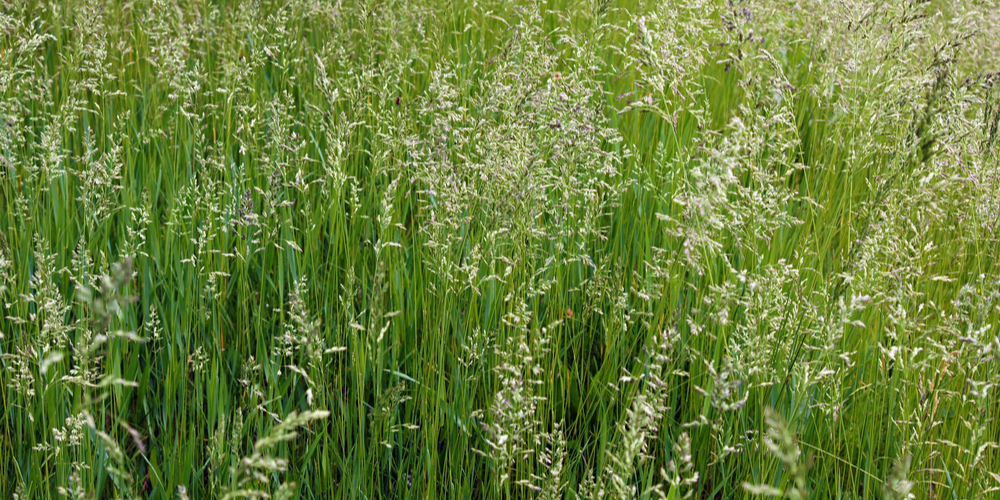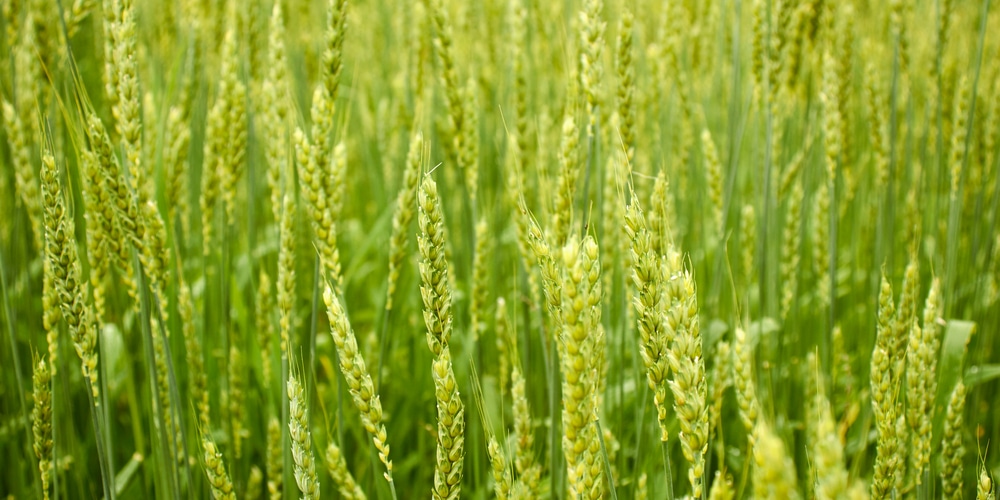Tall Fescue and a commercial grass seed mix called ‘Sun and Shade’ are top choices when it comes to a lawn that experiences shade for a significant part of the day.
When it comes to options, should you get tall fescue grass or sun and shade as your turf? Come and check out our tall fescue vs sun and shade showdown to see what’s best for your lawn.
What is Tall Fescue? How About Sun and Shade?
Tall Fescue is an ornamental, perennial grass with a rather curious growth pattern. The cool season variety is native to Europe and grows in clumps through vertical tillers. Fescue is widely known for being super adaptable in a variety of environments, including drought, cold, and shade.
Sun and Shade is a grass seed mix that contains fescue, bluegrass, and rye, all of which can tolerate shaded areas and places that get dappled sunlight. Lawn owners that can’t grow other grasses because of sub-optimal lighting conditions can try Tall Fescue or the Sun and Shade.
Tall Fescue vs Sun and Shade
Color and Appearance
Tall fescue has that long and thin grass blade characteristic, as well as a deep root system that’s capable of getting nutrients deep underground. The bright green color is certainly appealing to the senses, and the grass tends to keep it well even if subject to a partial sun or part-shade environment.
Sun and Shade is a mix of fescue, rye, and bluegrass, which means you get an assortment of colors and blade appearances. However, the three grass species blend well together and can tolerate a shady lawn as well.
Toughness and Traffic Tolerance
Tall Fescue grass has a slightly lower traffic tolerance compared to the Sun and Shade grass mix. The reason behind this is that the grass’ ‘tillers’, or vertical runners are located above the ground and are easily damaged by foot traffic and constant wear. Unfortunately, these roots have a limited capacity to regenerate or recover, so they’re not recommended for those with several children or large pets.
Sun and Shade has a slight edge in the toughness department as well since it’s not wholly composed of fescue. The thick and coarse lawn you get from seeding Sun and Shade makes it a wee bit tougher in terms of recovering from daily wear and foot traffic.
Resistance to Pests, Drought, and Heat
Tall Fescue has the upper hand versus Sun and Shade in this aspect. Within its growing zone, tall fescue will have very few problems adapting to the sun as well as the climate. In summers, you won’t have to worry about the grass wilting due to extreme heat. Also, you can get away with a missed watering or two as fescue has deeper roots and can survive for longer than Sun and Shade.
Both Sun and Shade and Tall Fescue have a strong resistance to pests and diseases, but it’s mostly a matter of personal habits. Take care of your fescue or sun and shade and it should thrive the whole growing season.
The ideal growing temperature for tall fescue is between 60 to 80 degrees F, while sun and shade thrives in temperature ranges of 55 to 95 degrees F.
Maintenance
The best part of having tall fescue on your lawn is that it’s very easy to care for. The same goes for Sun and Shade- the combination of rye, bluegrass, and fescue all come together in a drought-tolerant and temperature-tolerant turf.
Both grass types require less irrigation compared to other cool-season grasses. You can typically hold out on the hose or sprinkler system as long as the weather hasn’t been too hot for a couple of days. In fact, it’s recommended that you let the ground dry out so you won’t overwater your fescue lawn (and risk root rot in the process).
Also, both fescue and sun and shade don’t need a short mowing and will perform best when the height is around two to three inches. Weeds and unwanted plants are less likely to appear since fescue and the grass seed mix tend to crowd them out and deny access to essential nutrients. Just remember to keep the mowing height at three inches and you shouldn’t experience any weed invasion for a long time.

